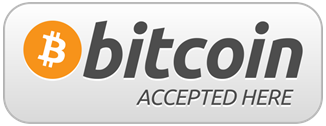This is a guest post by Radoslav Albrecht who is the Co-founder and CEO of Bitbond – a global Bitcoin peer-to-peer lending platform based in Berlin
When Zopa went live in 2005 it was the first online peer-to-peer lending platform. At the beginning many people thought it wasn’t the best idea to lend money to individuals. The majority felt better by bringing their savings to a bank. Critics didn’t realize that banks were handing out the money to individuals and businesses in quite the same manner – only that through P2P lending this happens at lower operating costs and better customer convenience.
Since early 2009 another new financial innovation came up – the digital currency bitcoin. Entire books have already been written about bitcoin. We will only scratch its surface here. Bitcoin can be looked at from at least two perspectives, the technology perspective and the application perspective. We won’t dive into the technology here. When discussing bitcoin P2P lending, the application of bitcoin as a currency is the relevant perspective.
1. Bitcoin as a currency
As a currency bitcoin offers a number of significant advantages. You can send bitcoins to any location in the world and they will be transacted in a few seconds. It’s very similar to sending an email. Therefore the best analogy between bitcoin and a wire transfer is that between email and a letter. The letter can take up to a couple of days depending on where you’re sending it. The email gets to the receiver instantaneously, and so does bitcoin.
At the same time bitcoin transactions are a lot cheaper than wire transfers. Especially international remittances are very expensive with fees that go easily to 10% of the transaction value. In a bitcoin transaction only the sender pays a small fixed fee. Regardless of the amount, the transaction fee is below 0.01 Euro in bitcoin.

Bitcoin is also independent of third parties like banks or other companies. Therefore it’s also called a peer-to-peer currency. You are in control of your own money and don’t need any third party if you want to send it to someone else. To hold bitcoins, you don’t need a bank account. Bitcoins are stored in digital wallets, most of which are open source.
So why would someone use bitcoin as a currency in P2P lending?
2. Cross-border lending and diversification
As of today there are only few P2P lending platforms that offer cross-border lending. Only a limited number of countries are supported and mostly they are in the euro zone. Using bitcoin as a currency makes P2P lending truly international. There are no borders anymore. Every country in the world can be reached where people have access to the internet. Due to the duration and costs of international money transfers this wouldn’t be possible without bitcoin.
This enables lenders to take advantage of international diversification. Lending money is cyclical. When you lend in one country only, you have a one-sided exposure to this economy because default rates tend to go up during economic downturns. When you lend internationally, you can diversify the country risk away.
The only prerequisite to participate in bitcoin p2p lending is access to the internet, no bank account is needed. In many emerging market regions like Latin America the penetration with bank accounts makes up only ~30% of the adult population. Everybody else in such countries is excluded from formal financial services – be it saving for interest or borrowing money.

The number of worldwide smart-phone users will grow to 3.2 billion until 2017. This means there will be more people with access to the internet than people who have a bank account. Through bitcoin all these people get access to a global, company-independent and low cost payment network. Via bitcoin P2P lending platforms these people additionally get access to affordable loans and profitable saving opportunities.
3. Lower costs mean lower fees
To this day all traditional P2P lending platforms cooperate with a bank. In many cases this has regulatory reasons, but operational requirements are more than equally important. Since payments between borrowers and lenders are conducted, the platform needs to have access to the electronic funds transfer system. The cooperation with a bank is a significant cost factor to a P2P lending platform and therefore drives fees up.
In bitcoin P2P lending every platform builds its own infrastructure based on the open source bitcoin software. This is also the reason why bitcoin is also called programmable money. All existing P2P bitcoin lending platforms fully rely on their own infrastructure. This allows us at Bitbond to charge 0% fees to lenders and very moderate fees to borrowers.
4. Coping with exchange rate fluctuations
One often discussed aspect about P2P bitcoin lending is the exchange rate volatility of bitcoin versus other currencies. When the bitcoin price goes up, the amount of euros or another local currency that the borrower needs to repay will be larger than the initial face value of the loan. This effectively increases the borrowing costs and makes the return to lenders higher. When the price goes down, the loan gets cheaper for the borrower but the lenders lose out on their returns.
In the early days of P2P bitcoin lending most of the loans that were taken out had one purpose – the financing to buy bitcoin mining hardware. Mining is the process how new bitcoins are created. The income that is generated from mining is denominated in bitcoin – regardless of bitcoin’s value in other currencies. For such loans the bitcoin price fluctuations only matter to the lender (specifically only price decreases). For the borrower price fluctuations don’t affect costs or the ability to repay.
In other use cases, like the financing of working capital for an online shop, the exchange rate fluctuations do matter though. This is why Bitbond also offers a loan type where the base value is denominated in US dollars. For these loans the monthly installments are pegged to the bitcoin vs. USD exchange rate. The value of the payments is held constant in USD, the amount of bitcoins that is being repaid fluctuates along with the exchange rate.
This way borrowers and lenders are hedged against exchange rate fluctuations. Loans that are pegged to a stable currency are well known in parts of the world where the local currency fluctuates heavily in value. Countries with high inflation rates for instance apply exchange rate pegged loans routinely. The table below shows a loan from the borrower perspective on Bitbond. The monthly payments are pegged to the US dollar. All values are for illustration purposes only.

5. International scoring
Another difference between traditional and bitcoin P2P lending is the scoring of borrowers. P2P lending platforms that operate in only one or few countries rely on local credit bureaus. Since bitcoin P2P lending is international, so is the scoring.
To create a scoring mechanism that can be used for every country, at Bitbond we try to get data that is typically available all around the world. Every borrower applicant has to upload an ID document, a residency document and a proof of income. Additionally we leverage the fact that the use of e-commerce and social media has become ubiquitous around the world.
We require borrowers to give us one-time read-only access to at least one social media account (i.e. Facebook, Twitter or LinkedIn) or their PayPal or eBay account. These datasets are standardized regardless of the home country of the applicant. And this is just the beginning as there are other platforms that are widely used and which can serve as a source for high quality scoring data.
6. Debt collection
If borrowers default on their loan, a traditional P2P lending platform would sell the claim to a debt collector on the lenders’ behalf. Since bitcoin P2P lending is still very young, none of the existing platforms have built a relationship with debt collectors, yet. But going forward this is what’s going to happen. There are a number of debt collection agencies that operate in more than one region and it will only make sense for bitcoin P2P lending platforms to work with them just the same way other platforms do.
Currently the debt collection process includes frequent payment reminders via email, phone and SMS shortly after a payment is overdue. If a loan is defaulted upon, the identity of the borrower is disclosed to the lenders. This way they can take legal action on their own behalf.
7. Interest rates bitcoin P2P lending
People who are active investors in P2P lending are usually in it for the returns. So let’s talk some numbers here. The average nominal interest rate on Bitbond is 18.5% p.a. The effective return after defaults is approximately 7% p.a. with a default rate of around 12%. This rate references the number of loans and is lower when looking at loan volumes.
Considering the limited data set that is available in an international scoring environment, we regard this as an attractive return. By continuously adjusting our scoring mechanism and our interest rates we want to bring the effective return up to 13% p.a. To get there we apply risk based loan pricing which means that we as a platform set the interest rate according to the borrower’s creditworthiness.
At Bitbond we want to be as transparent as possible. Therefore we provide the entire loan history as a CSV download on our Statistics page. Based on the statistics, everybody can evaluate the portfolio according to their own needs and create investment strategies.
8. Way forward
Today bitcoin P2P lending is still in an early stage. Comparable to where zopa and other platforms were in 2006. Many things are in development, especially regarding the scoring of international borrowers. The potential behind P2P bitcoin lending is big for borrowers and lenders alike.
One of our favorite examples is a small business owner from Kenya who doesn’t have a bank account. Without a Bitcoin P2P lending platform like Bitbond it would have been impossible for him to obtain a loan. At the same time lenders from Europe and other parts of the world wouldn’t have easy access to distant markets with more attractive rates. Therefore we think it’s very worthwhile to make this happen.
Just the same way as early adopters paved the way for P2P lending; we strongly believe that early adopters will bring it to the next level with bitcoin P2P lending.
Editor’s comment: My personal opinion is that cross-border lending based on bitcoin is currently a high risk proposition to investors. While I appreciate some of the technological advantages described in the article, I think further development is needed, especially in debt collection processes.
